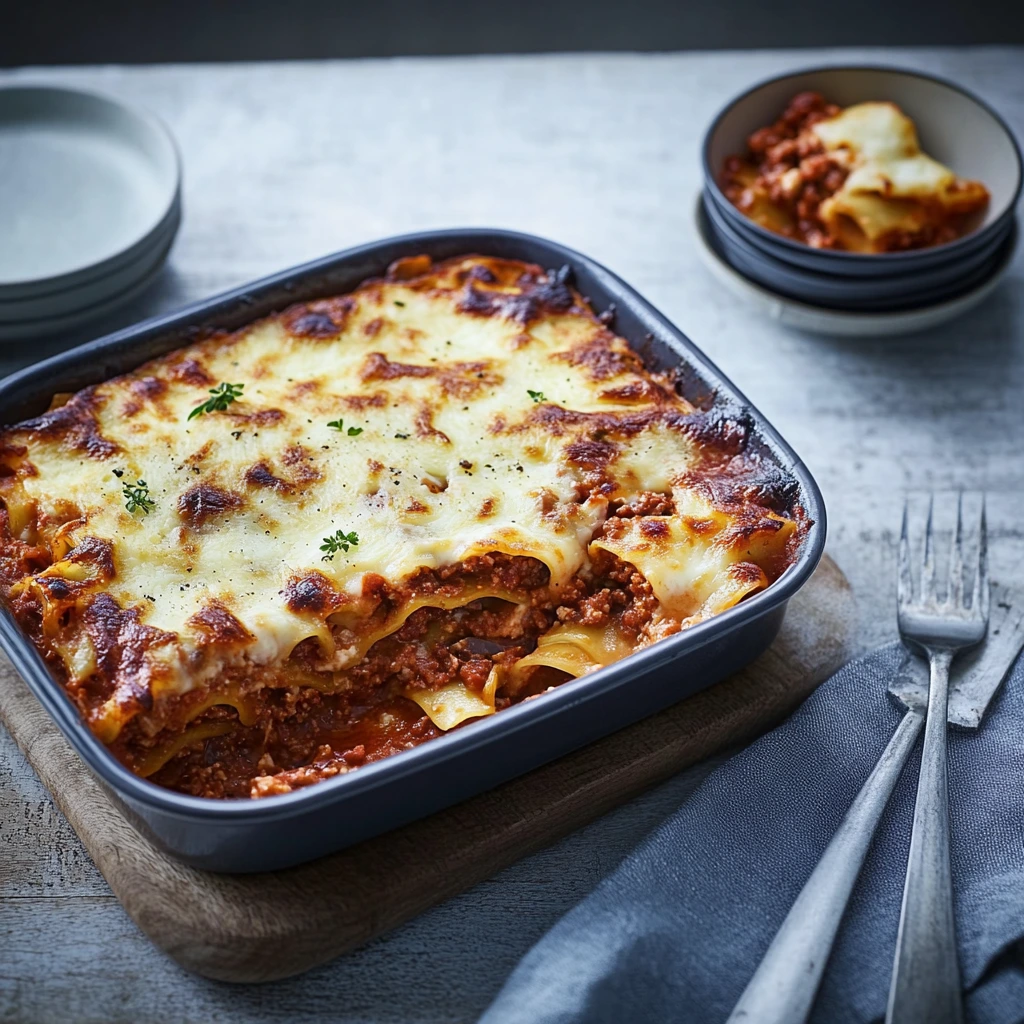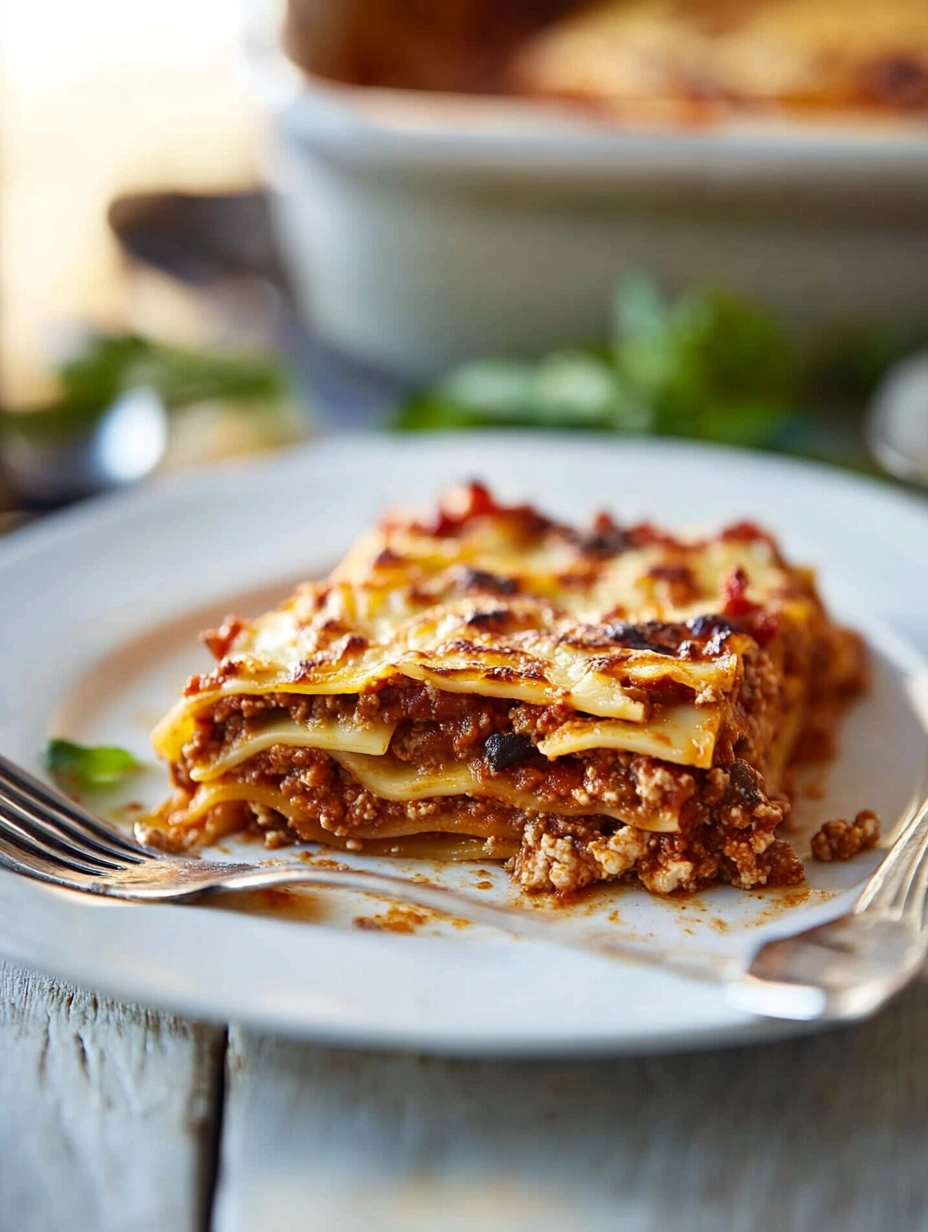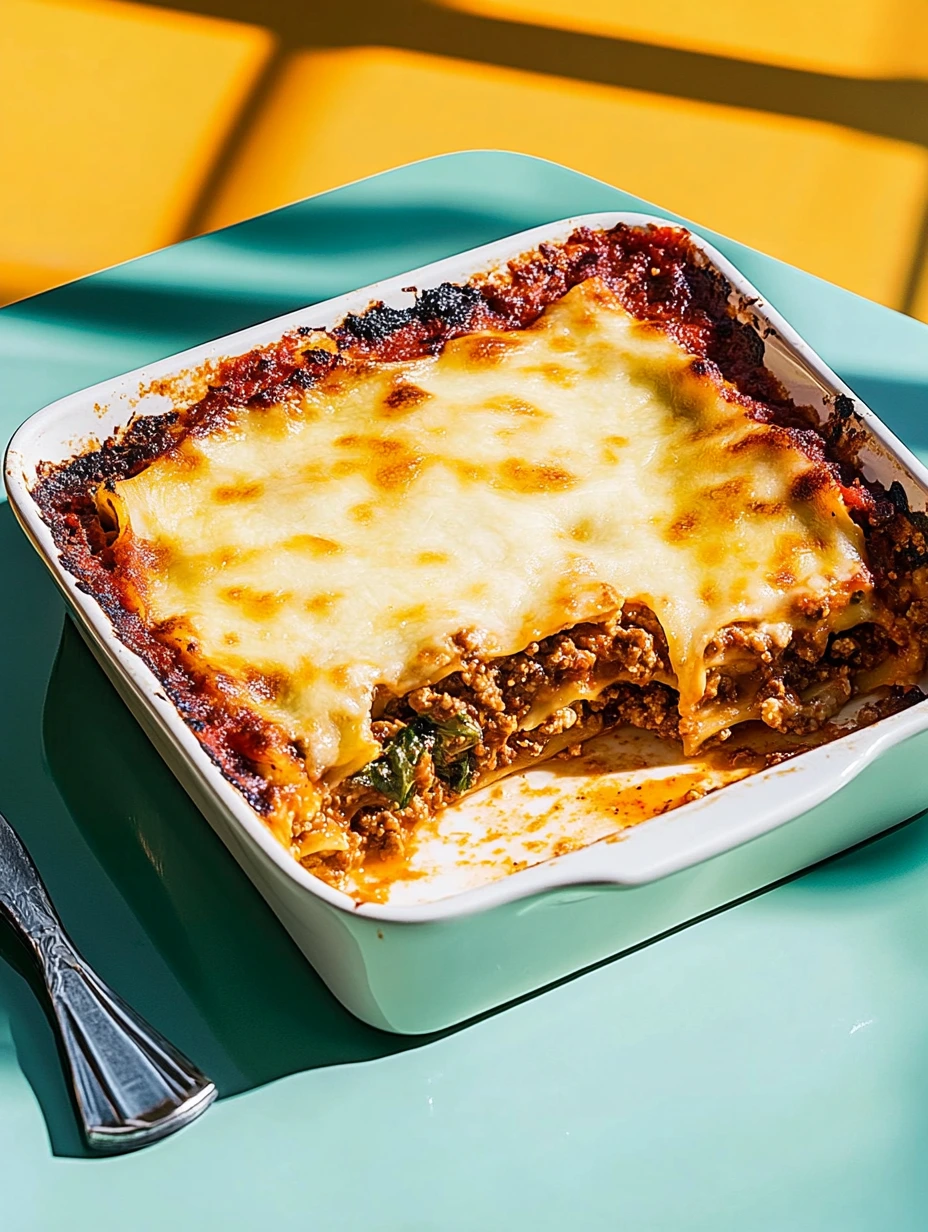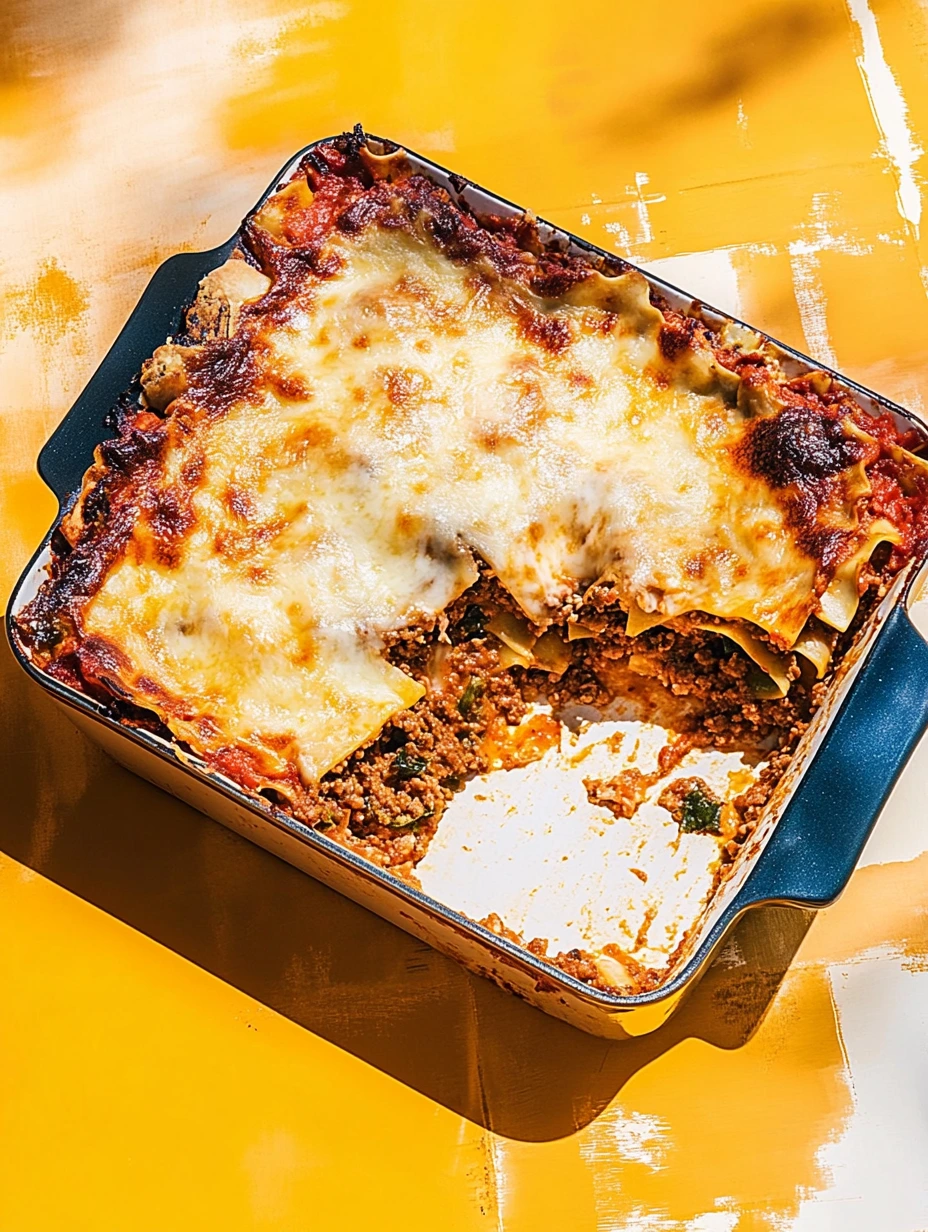 Pin it
Pin it
This veggie bolognese lasagna layers slow-cooked lentil ragu, pasta sheets and creamy bechamel sauce, all baked to golden perfection. You'd find it hard to tell this lasagna doesn't contain meat because it's so rich and satisfying.
I came up with this after years of testing to please my mixed family of vegetarians and meat-lovers. Even my dad, who stands firmly behind traditional Italian cooking, was amazed by how flavorful it was and asked for my recipe after finishing his second helping.
 Pin it
Pin it
Key Components
- Onions, celery, carrots: This aromatic trio forms the essential foundation of any good bolognese sauce, adding sweetness and depth
- Mushrooms: They bring umami flavor and a texture that surprisingly mimics ground meat
- Beluga or Puy lentils: Their firm texture and earthy flavors make a perfect meat substitute in this vegetarian version
- Walnuts: Briefly blended, they add unmatched richness and texture to the ragu
- Red wine: It builds complexity and depth, just like in traditional bolognese
- Crushed tomatoes: They provide the acidity and tomato base characteristic of Italian cooking
- Vegetable broth: It helps adjust the ragu consistency while boosting its flavors
- Butter, flour, milk: The must-have trio for a creamy bechamel that melts in your mouth
- Lasagna sheets: Go for fresh or pre-cooked pasta to make preparation easier
- Grated cheeses: The mix of parmesan and mozzarella creates a perfect balance between flavor and melty texture
I really like using Beluga lentils in this dish. Their black color and firm texture that holds up well during cooking creates a visual and taste illusion surprisingly close to traditional ground meat.
 Pin it
Pin it
Step-by-Step Guide
- Making the lentil ragu:
- Start by finely chopping the aromatic vegetables in a food processor to save valuable time. Cook them in olive oil until soft and slightly caramelized. This step is crucial for developing the base flavors of your sauce. Then add garlic and chopped walnuts before deglazing with red wine. Mix in crushed tomatoes, aromatic herbs and cooked lentils, then simmer on low heat so the flavors fully develop.
- Creating the bechamel:
- In a separate pot, melt butter over medium heat. Add flour while constantly whisking to form a smooth roux. Slowly pour in warm milk while continuing to whisk vigorously to avoid lumps. Keep cooking and stirring until the sauce thickens and coats the back of a spoon. Season with salt, pepper and a pinch of grated nutmeg to enhance the flavors.
- Layering everything:
- Preheat your oven to medium temperature. Start by spreading a thin layer of bechamel on the bottom of the lasagna dish to prevent the pasta from sticking. Place a first layer of lasagna sheets, generously cover with lentil ragu, then bechamel and sprinkle with grated cheese. Repeat this three times or until you run out of ingredients, finishing with a layer of bechamel generously topped with cheese.
- Baking it right:
- Put your lasagna in the oven covered with aluminum foil for about 30 minutes, then remove the foil and continue baking until the top turns deliciously golden and bubbles appear around the edges. This method gives you perfectly cooked lasagna, with tender pasta and a nicely browned top.
My first try with this recipe ended up with a slightly dry lasagna because I reduced my ragu too much. I've since learned to keep a looser texture by regularly adding broth while cooking the lentils.
Prep Ahead and Storage
This vegetarian lasagna works perfectly for make-ahead meals. The lentil ragu keeps for up to a week in the fridge and can even be frozen for three months. For best organization, prepare this sauce on the weekend then assemble your lasagna the day you want to eat it. You can also prepare the complete lasagna in advance and store it whole or in individual portions in the fridge for a week or in the freezer for up to three months.
 Pin it
Pin it
Vegan Option
This recipe easily adapts to a fully vegan version. The lentil ragu is already vegan, so you just need to replace the traditional bechamel with a creamy sauce made from pre-soaked cashews blended with water, lemon juice and seasonings. Use grated vegan cheese instead of traditional cheeses and check that your lasagna pasta doesn't contain eggs. The assembly and baking remain identical to the vegetarian version.
Serving Ideas
This vegetarian bolognese lasagna is so complete and satisfying that it needs few side dishes. A simple green salad dressed with a slightly tangy vinaigrette perfectly balances the richness of the dish. For a more elaborate touch, prepare roasted Mediterranean vegetables like zucchini, eggplant and bell peppers seasoned with herbs de Provence. Homemade garlic bread ideally completes this vegetarian feast.
This vegetarian bolognese lasagna represents the perfect balance between culinary tradition and innovation for me. Every time I make it for guests who doubt vegetarian cooking, I see their eyes widen with surprise at the first bite. It's exactly this kind of recipe that shows vegetarian food can be just as rich, comforting and satisfying as meat dishes, without ever feeling like a compromise.
Frequently Asked Questions
- → Can I make this lasagna ahead?
- Definitely! Assemble the entire dish up to 24 hours in advance and store it in the fridge. Just give it 5-10 extra minutes in the oven. It also freezes well, uncooked, for up to 3 months.
- → What’s a good substitute for beluga lentils?
- Puy lentils are a great alternative. Regular brown lentils work too, though they’ll be softer. Avoid red lentils as they tend to get too mushy for this.
- → How do I make this gluten-free?
- Use gluten-free lasagna sheets and swap the wheat flour in the béchamel for rice flour or a gluten-free flour blend. Make sure your vegetable broth is gluten-free as well.
- → Can this recipe be made vegan?
- Yes! Sub margarine or oil for butter, plant-based milk (unsweetened oat or soy work well) for dairy milk in the béchamel, and opt for dairy-free cheese that melts nicely. Double-check the pasta sheets don’t contain eggs.
- → Do I have to include the walnuts in the sauce?
- Nope! Walnuts add texture and a meat-like richness, but they’re optional. You can add extra diced mushrooms or a sprinkle of nutritional yeast to boost that umami flavor instead.
